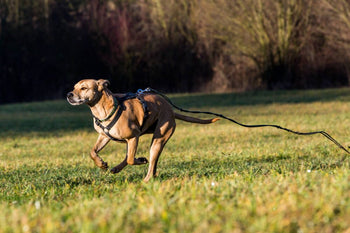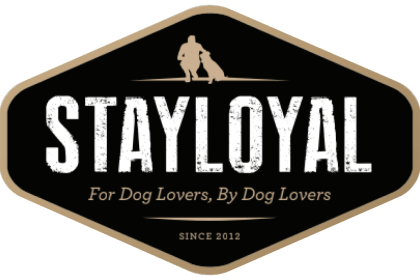Getting Your Dog to Listen With Distractions

Does your well-trained dog suddenly stop listening to you when guests come over or you take her somewhere? Don’t worry, you are not alone. It’s pretty common and is something you can fix. But first, you need to understand why your dog is not listening. (Hint: it’s not because he is stubborn or doesn’t feel like it).
The way a dog’s brain works affects if he is able to respond to your human cues. If he is feeling nervous, overly excited, threatened or is in predatory (chase) mode, your dog is physically unable to respond. That’s because the thinking side of his brain has switched off and he is being controlled by his instincts.
At this point, training is done. If he is gone over threshold, there is no point in giving him cues or trying to “make him listen.” Instead, remove him from the environment. (This by the way, is the state most dogs are in when they bite whether out of fear or aggression. So to prevent bites, don’t ignore the warning signs!)
Regardless of why your dog is not responding – anxiety, over excitement, feels threatened or is in “chase mode” – the way to teach him to stay under threshold is the same.
Teaching Him To Focus On You
To get your dog listening during distractions, you need to gradually build them up. Start with small, simple distractions and train your dog with those. If she is successful, add more distractions, new places, etc. For each dog, the level of distractions and what is considered difficult is different, so you need to watch your dog for signs that they are reaching threshold and adjust your training. For example, a ball-crazy dog will have a hard time with a ball being bounced nearby. But a dog that has no interest in toys may not find that distracting at all.
Signs your dog is approaching threshold:
- Any stress signal – looking around frantically, trying to hide, yawning, lip licking, panting, tail tucked, whining, white of eye showing, etc.
- Any excitement signal – lunging at people, jumping on you, mouthing, air humping, demand barking, etc.
- Any reactive signal – hard staring at people/objects, barking, stiff body posture, growling, etc.
If you start seeing these signs, reduce the distraction. Move away from it, take it out of site, etc. It means your dog is approaching threshold. Learning takes place under threshold only. To get your dog to listen with distractions, you need to slowly move that threshold higher.
In all cases, if your dog will no longer take food you are above threshold! Even if you don’t normally train with treats, having food with you as a tester in these cases is a good idea.
At this point, training is done. A dog’s adrenaline remains in his body for 24 hours. So it’s a good idea to stop and wait until the next day to try again with lesser distractions.
Adding Distractions
When adding distractions, do so slowly. Remember distance makes a difference, so if you know it’s something your dog will really be distracted by, start further away. Let’s take the ball-crazy dog as an example. You may have to start with someone bouncing a ball 10 feet away in order for your dog to still focus on you. Conversely, you can start with someone who is closer to you, but is just holding the ball, not bouncing it (as the movement makes it more exciting for most dogs). Then as your dog continues to work you slowly increase the distraction – bring the dog closer to the ball and/or start moving the ball slowly.
For New Places. In these cases, start when the place you are visiting is quiet. So the park mid-day on a weekday, when there are less people and other dogs. Stick to the quieter parts of the park and then slowly build up to busier times.
Have just one quiet guest over to your house and then build up the five grandkids visiting.
As long as you reward your dog for focusing on you, increase distractions slowly, and pay attention to her body signals that are letting you know when the distraction is too great, you will be successful. Your end result will be a well-mannered dog no matter the circumstances.








